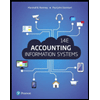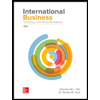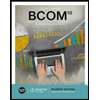Unit_Exercises_v
.docx
keyboard_arrow_up
School
CDI College of Business, Technology and Health Care *
*We aren’t endorsed by this school
Course
1013
Subject
Business
Date
May 13, 2024
Type
docx
Pages
34
Uploaded by MajorScience2797 on coursehero.com
WWW.YORKVILLEU.CA
BUSI 1013: STATISTICS FOR BUSINESS
UNIT EXERCISES
Unit Exercise 1
BUSI 1013 S
TATISTICS
F
OR
B
USINESS
1
WWW.YORKVILLEU.CA
1.
As the Manager of Customer service at a Bank, you were assigned the job of revamping the Customer Service function at the branches. To get the project started, a research study at four branches was conducted to assess the effectiveness of a recent change in the customer account management process. Details of the study are as follows:
A group of customers from each of the four branches were selected randomly and invited to participate in the study.
Personal deposit and loan balances from these customers were extracted from the Bank’s databases before the change took place.
Personal deposit and loan balances from these customers were also extracted from the Bank two months after the change
A simple survey was conducted to ask the customers involved about their experiences with the change. A few variables from the survey were recorded and appended to the extracted deposit and loan file.
The attached Excel workbook, BUSI1013 Bank Dataset.xlsx
, contains the data collected from the research study. Answer the following questions using this data set. a.
What would the population of interest be for this study?
The population of interest in this study comprises the customers of the bank. Specifically, it includes individuals who have participated in the research study conducted by the bank. These customers are the focus of the investigation, and the findings from the study are likely intended to provide insights into the behavior, preferences,
and experiences of this particular group.
b.
Which method of sampling was used in this study?
Sampling is a technique used to gather representative data or observations from a larger group, known as the population. The method of sampling depends on how the data was collected. Here are the two primary types of sampling methods:
Probability sampling
: This method involves random selection, meaning every member
of the population has an equal chance of being selected. It allows you to make strong statistical inferences about the whole group. Types of probability sampling include simple random sampling, stratified sampling, and cluster sampling.
Non-probability sampling
: This method involves non-random selection based on convenience or other criteria. You won’t be able to make statistically valid inferences about the whole group, but it allows you to easily collect initial data. Types of non-probability sampling include convenience sampling, quota sampling, and purposive sampling.
From the given dataset simple random sampling method was used in the study.
BUSI 1013 S
TATISTICS
F
OR
B
USINESS
2
WWW.YORKVILLEU.CA
c.
How big is the sample size?
The sample size refers to the number of observations or replicates (the rows in your case) in your data. If you’re using Excel, you can determine the sample size by counting the number of rows of individual data entries in the Excel sheet. Each row usually represents a unique entry or individual participant’s information in the research study. So, there are 152 rows in the given data and the size of the sample data is very big.
d.
How many variables are in the data set?
The dataset includes several variables, each representing a different aspect of the participants and their interactions with the bank. The variables include:
1. Customer ID
2. Branch
3. Gender
4. Age
5. Income
6. Deposit Before
7. Deposit After
8. Increase in Deposits
9. Loans Before
10. Loans After
11. Increase in Loans
12. Rating
13. Recommend Before
14. Recommend After
These variables cover a range of demographic information, financial metrics, and customer feedback, providing a comprehensive dataset for analysis.
e.
Which of the variables are categorical?
Categorical variables are those that represent categories or labels. In this dataset, the following variables are categorical:
1. Customer ID (assuming it is a label and not a unique identifier)
2. Branch
3. Gender
4. Rating
5. Recommend Before
6. Recommend After
These variables involve discrete categories such as branch names, gender labels, and rating levels.
f.
Which of the variables are numerical?
BUSI 1013 S
TATISTICS
F
OR
B
USINESS
3
WWW.YORKVILLEU.CA
Numerical variables represent measurable quantities. In this dataset, the following variables are numerical:
1. Age
2. Income
3. Deposit Before
4. Deposit After
5. Increase in Deposits
6. Loans Before
7. Loans After
8. Increase in Loans
2.
Use a frequency distribution table to numerically summarize the variable Branch in the BUSI1013 Bank Dataset.xlsx
data set. Based on the table, use a pie chart to summarize this variable graphically. Branch
Frequency
A
65
B
40
C
27
D
20
152
65
40
27
20
Frequency
A
B
C
D
3.
Data from the Chase branch is extracted from the data set BUSI Bank Dataset.xlsx and is stored in BUSI1013 Chase Dataset.xlsx
. Use this file to answer the following.
a.
Construct a histogram for the variable income.
b.
What does the histogram tell us about the shape of the distribution of income?
c.
Construct a stem-and-leaf display for the variable age. Please be sure to include a leaf unit.
BUSI 1013 S
TATISTICS
F
OR
B
USINESS
4
WWW.YORKVILLEU.CA
a)
Income vs. Frequency
X Y
[5, ($43.70, $45.70)] [2, ($45.70, $47.70)] [6, ($47.70, $49.70)] [3, ($49.70, $51.70)] [8, ($51.70, $53.70)]
[3, ($53.70, $55.70)]
b)
Since there are more frequencies of values for smaller values of age, there is peak at left end and tail towards the right-end. The shape of the stem-and-leaf display shows that the skewness of the age is left-skewed. c)
A stem-and-leaf display for the variable age. Stem Leaf
3 0 0 1 2 2 4 6 6 9 9 9
4 1 1 2 2 7 9
5 5 7 8 8 8
6 0 1 1 1 1
------------------------------------------------------------------
4.
Use the data in BUSI1013 Chase Dataset.xlsx
to answer these questions:
a.
What is the sample mean of the variable income?
b.
What is the sample median of the variable income?
BUSI 1013 S
TATISTICS
F
OR
B
USINESS
5
WWW.YORKVILLEU.CA
c.
Find the range of the variable income.
d.
Find the sample standard deviation of the variable income.
e.
Compute the first and third quartile of the variable income.
f.
What is the IQR of the variable income?
g.
Give the five-number summary for the variable income.
h.
Use the IQR rule to determine whether there are outliers for the variable income.
Answer:
a)
X
52.1
49.2
50.1
51.1
48
45.5
49.3
50.6
48.1
54.9
54
51.9
48.9
53.2
52.7
44.4
43.7
49.5
54.2
53.6
52.8
53.5
46.9
44.5
44.2
52
47.2
Total
1346.1
n = Sample size = 27
BUSI 1013 S
TATISTICS
F
OR
B
USINESS
6
Your preview ends here
Eager to read complete document? Join bartleby learn and gain access to the full version
- Access to all documents
- Unlimited textbook solutions
- 24/7 expert homework help
Related Questions
1.) Describe the process for building the customer scoring model. What would be the inputs? What kinds of data and business processes could potentially be brought into it to create a better scoring model?
Course title: Business Analytics
arrow_forward
1) Define CRM and SCM systems by describing their characteristics and components, explain each of the two main types of data analytics that exist – descriptive and predictive – including how each works. Critically evaluate how, and for which purposes, data analytics can be applied in conjunction with CRM and SCM systems. Refer to concepts learned in class and use examples to illustrate your arguments.
arrow_forward
Determine the type of business analytics for the following scenarios.
A. Imagine you are a meteorologist. You have to foretell the weather for the next two weeks by analysing the data from the satellites. Here, you have to apply advanced statistical, information software, or operations research methods to identify predictive variables and build predictive models. Discuss in detail which type of business analytics will be suitable for this scenario.
arrow_forward
Is a knowledge of statistics required to use business intelligence (BI) tools? In what way would this be useful?
arrow_forward
Tpoic: "Causes of rising food prices and the challenges faced by rural farmers in Mt. Royal, Carriacou".
1. Based on the topic about what are 15 survey questions that can be asked to the farmers.
arrow_forward
Hide Assignment Information
Instructions
Exercise #5
For this week exercise, we need to try a few logit models (see this link for more information: LOGIT REGRESSION)
If you have chosen to work with Excel, please run above three models and complete the following tables.
Model 1: Run a regression model and use being a member of network and find out its impact on hospital cost? (Model 1) Model 2: For the 2nd model run a regression model and use being a member of network and find out its impact on hospital cost and hospital revenue? (Model 2) Model 3: For the 3rd model run a regression model and use being a member of network and find out its impact on ratio-Medicare-discharge and ratio-Medicaid-discharge.
Based on your finding please recommend 3 policies and discuss the impact of being on a network on hospital cost, hospital revenue and out its impact on ratio-Medicare-discharge and ratio-Medicaid-discharge. Do you recommend keeping membership for a hospital? Why or why not?
arrow_forward
How does data modeling support the development of effective Business Intelligence (BI) systems?
arrow_forward
There are a variety of methods of data collection in qualitative research, including observations, textual or visual analysis (e.g. from books or videos) and interviews (individual or group). However, the most common methods used, particularly in humanities and social science research, are interviews and focus group discussions.From the forerunning commentary, briefly outline the step-by-step procedures you would take for the following qualitative data collection methods when conducting your study:QUESTION 1.1Google meet interviewsQUESTION 1.2Participant observationsQUESTION 1.3Structured interviewsQUESTION 1.4Focus group discussions via Google MeetQUESTION 1.5.Direct observations
arrow_forward
Is formal training in statistics required to make use of BI tools? Why are we doing this?
arrow_forward
How does predictive analytics being applied in TikTok? Please explain
arrow_forward
The following data describes weekly gross revenue ($1000s), television advertising expenditures ($1000s), and newspaper advertising expenditures ($1000s)
for Showtime Movie Theaters.
×
Weekly Gross
+
Revenue
($1000s)
99
90
95
92
95
94
94
94
a. Find an estimated regression equation relating weekly gross revenue to television advertising expenditures and newspaper advertising expenditures (to 2
decimals).
2.84
Television
Advertising
($1000s)
5.0
2.0
4.0
2.5
3.0
3.5
2.5
3.0
Revenue =
81.73
1.29 News Adv
TV Adv +
b. Choose the correct plot of the standardized residuals against ĝ.
Newspaper
Advertising
($1000s)
1.5
2.0
1.5
2.5
3.3
2.3
4.2
2.5
arrow_forward
4
Match the type of analytics to which tool would be in each scenario.
A company would like a summary of the number of employees that called out sick last week.
V
A company would like to determine how many of each product should they manufacture each day in
order to maximize profits.
A company would like to estimate the average number of new clients that will become members next
month.
a. Predictive analytics
b. Prescriptive analytics
c. Descriptive analytics
arrow_forward
Q1) Ahmed's interest was cricket. When he finished university, he wanted to work in a management job. He wanted to do his research project on some aspect of general management and social sciences, preferably for a sports goods manufacturer but had no research idea. He asked five friends, all taking business education degrees, to help him brainstorm the problem. You are requested to use the following problem-solving techniques to generate and refine the research idea in this business scenario.
i) The technique of Brainstormingii) The Delphi technique
arrow_forward
Discuss the ethical considerations surrounding the use of customer data in CRM. What measures should organizations take to ensure data privacy and compliance with regulations?
arrow_forward
In examining parental involvement at xyz Primary School, insights were garnered from 15 parents, 15 teachers, and 15 students, contributing to a comprehensive understanding of parental engagement, academic performance, and the perceived impact on students' education. The structured interviews with teachers and the questionnaire responses from parents and students created a diverse dataset, capturing a snapshot of the current state of affairs within the school community. It is essential to acknowledge the biases inherent in our data collection process. The self-reported nature of the data introduces the possibility of social desirability bias, where participants may provide responses aligned with societal expectations. The teachers' perspectives may carry professional biases, potentially influencing a more positive view of parental involvement. Moreover, the study's limitations, including a sample size of 15 for each group and a lack of longitudinal perspective, emphasize the need for…
arrow_forward
Business analytics can be of three types: descriptive, predictive, and prescriptive. Describe each of those. Imagine you are a data analyst in FedRetail, an online retail shop. Your manager wants a forecast of the sell in the upcoming Christmas season. What kind of analysis you should do to find out your manager's query? Explain.
arrow_forward
A bank manager notices that by the time customers get to the teller,they seem irritated and impatient. She wants to investigate the problemfurther, so she hires you to design a research project to figure out whatis bothering the customers. The bank wants three studies: (a) severalfocus groups of their customers, (b) observation using a hidden camera,and (c) an online survey of 500 customers. Which studies arequalitative, and which are quantitative?
arrow_forward
Company Name: Floward (flowers Market)
Create a campaign for your company to launch, starting January 2021 till December, that will be active for 12 months. Marketing budget: SR 450,000 to spend on digital advertising media over the next 12 months. The budget also includes up to SR 340,500 for advertising creative and content development, and for the company to manage the program.
Monitoring and Optimization: describe how you will measure and improve digital marketing performance during the campaign. What tools you will use to monitor the campaign’s activity. (Must include screenshots of the monitoring tools that will keep track of your costs and activity).
arrow_forward
For the survey questions below: 1) Identify the problem with each survey question (lack of simplicity, double-barreled question, loaded question, or negative wording); 2) briefly explain why the question has that problem 3) rewrite the question to reduce the problem and make it a better survey question.
a) Do you feel that assiduous students are more likely to graduate from college
b) Do you disagree with the mayor’s policy on retirement pensions?
c) Do you think that strong academics and varied social opportunities are priorities in choosing a college?
d) Do you think that overtaxing our vulnerable elderly is a heartless thing to do?
arrow_forward
e-Test
uitiple Choice. Select the letter of your answer.
1. The income statement is a statement that shows the result of the
operation of the business. In the first quarter of its operation the
business has a revenue of Php155,000 and cost and expense
amounting to Php80,000. How much is the net income of the
business?
C. Php75.00
d. Php235,000
a. Php155,000
b. Php80,000
INFINIX HOT 9 PLAY
Al CAMERA
ntatement are nominal or temporary
arrow_forward
Suppose a researcher aims to investigate the relationship of investment and growth of XYZ organization for the past 2.5 decades. Which type of time horizon should he used?
a.
a & b is correct
b.
Cross-sectional data
c.
Time Series data
d.
Panel data
arrow_forward
Difference between Business statistics and Business Analytics”.
arrow_forward
The managing director of a consulting group has the accompanying monthly data on total overhead costs and professional labor hours to bill to clients. Complete parts a through c
Click the icon to view the monthly data.
a. Develop a simple linear regression model between billable hours and overhead costs.
Overhead Costs 105.790.5+ (47.3714) x Billable Hours
(Round the constant to one decimal place as needed. Round the coefficient to four decimal places as needed. Do not include the $ symbol in your answers)
b. Interpret the coefficients of your regression model. Specifically, what does the fixed component of the model mean to the consulting firm?
Interpret the fixed term, bo, if appropriate. Choose the correct answer below.
OA. The value of bo is the predicted overhead costs for 0 billable hours
OB. For each increase of 1 unit in billable hours, the predicted overhead costs are estimated to increase by bo
C. It is not appropriate to interpret bo. because its value is the predicted…
arrow_forward
Q1. Outline underlying reasons for poor quality that may have impacted Airbnb.Q2. Examine to what extent Airbnb has the financial capabilities and competent employees to improve quality.
Q3. Make recommendations to Airbnb, to improve the quality of their service by ensuring that your group suggest a suitable total quality management concept.Below are the details of the role and areas that the directors should address during the meeting.
arrow_forward
Please help with correct answers in details: step by step as last submission were given incorrect answers
A statistical program is recommended.
The quarterly sales data (number of copies sold) for a college textbook over the past three years follow.
Quarter
Year 1
Year 2
Year 3
1
1,690
1,800
1,850
2
940
900
1,100
3
2,625
2,900
2,930
4
2,500
2,360
2,615
arrow_forward
Describe and explain what CVP analysis is. Provide examples of how managers may use this tool for sensitivity analysis.
arrow_forward
105 Which of the following real estate mortgage
transactions is subject to the TILA-RESPA
Integrated Disclosure rule (TRID)?
A) Reverse mortgage
B) Home equity line of credit (HELOC)
C) A single-family residence loan secured by real
property
D) Mortgage secured by a mobile home not
attached to land
arrow_forward
SEE MORE QUESTIONS
Recommended textbooks for you

BUSN 11 Introduction to Business Student Edition
Business
ISBN:9781337407137
Author:Kelly
Publisher:Cengage Learning

Essentials of Business Communication (MindTap Cou...
Business
ISBN:9781337386494
Author:Mary Ellen Guffey, Dana Loewy
Publisher:Cengage Learning

Accounting Information Systems (14th Edition)
Business
ISBN:9780134474021
Author:Marshall B. Romney, Paul J. Steinbart
Publisher:PEARSON


International Business: Competing in the Global M...
Business
ISBN:9781259929441
Author:Charles W. L. Hill Dr, G. Tomas M. Hult
Publisher:McGraw-Hill Education

Related Questions
- 1.) Describe the process for building the customer scoring model. What would be the inputs? What kinds of data and business processes could potentially be brought into it to create a better scoring model? Course title: Business Analyticsarrow_forward1) Define CRM and SCM systems by describing their characteristics and components, explain each of the two main types of data analytics that exist – descriptive and predictive – including how each works. Critically evaluate how, and for which purposes, data analytics can be applied in conjunction with CRM and SCM systems. Refer to concepts learned in class and use examples to illustrate your arguments.arrow_forwardDetermine the type of business analytics for the following scenarios. A. Imagine you are a meteorologist. You have to foretell the weather for the next two weeks by analysing the data from the satellites. Here, you have to apply advanced statistical, information software, or operations research methods to identify predictive variables and build predictive models. Discuss in detail which type of business analytics will be suitable for this scenario.arrow_forward
- Is a knowledge of statistics required to use business intelligence (BI) tools? In what way would this be useful?arrow_forwardTpoic: "Causes of rising food prices and the challenges faced by rural farmers in Mt. Royal, Carriacou". 1. Based on the topic about what are 15 survey questions that can be asked to the farmers.arrow_forwardHide Assignment Information Instructions Exercise #5 For this week exercise, we need to try a few logit models (see this link for more information: LOGIT REGRESSION) If you have chosen to work with Excel, please run above three models and complete the following tables. Model 1: Run a regression model and use being a member of network and find out its impact on hospital cost? (Model 1) Model 2: For the 2nd model run a regression model and use being a member of network and find out its impact on hospital cost and hospital revenue? (Model 2) Model 3: For the 3rd model run a regression model and use being a member of network and find out its impact on ratio-Medicare-discharge and ratio-Medicaid-discharge. Based on your finding please recommend 3 policies and discuss the impact of being on a network on hospital cost, hospital revenue and out its impact on ratio-Medicare-discharge and ratio-Medicaid-discharge. Do you recommend keeping membership for a hospital? Why or why not?arrow_forward
- How does data modeling support the development of effective Business Intelligence (BI) systems?arrow_forwardThere are a variety of methods of data collection in qualitative research, including observations, textual or visual analysis (e.g. from books or videos) and interviews (individual or group). However, the most common methods used, particularly in humanities and social science research, are interviews and focus group discussions.From the forerunning commentary, briefly outline the step-by-step procedures you would take for the following qualitative data collection methods when conducting your study:QUESTION 1.1Google meet interviewsQUESTION 1.2Participant observationsQUESTION 1.3Structured interviewsQUESTION 1.4Focus group discussions via Google MeetQUESTION 1.5.Direct observationsarrow_forwardIs formal training in statistics required to make use of BI tools? Why are we doing this?arrow_forward
- How does predictive analytics being applied in TikTok? Please explainarrow_forwardThe following data describes weekly gross revenue ($1000s), television advertising expenditures ($1000s), and newspaper advertising expenditures ($1000s) for Showtime Movie Theaters. × Weekly Gross + Revenue ($1000s) 99 90 95 92 95 94 94 94 a. Find an estimated regression equation relating weekly gross revenue to television advertising expenditures and newspaper advertising expenditures (to 2 decimals). 2.84 Television Advertising ($1000s) 5.0 2.0 4.0 2.5 3.0 3.5 2.5 3.0 Revenue = 81.73 1.29 News Adv TV Adv + b. Choose the correct plot of the standardized residuals against ĝ. Newspaper Advertising ($1000s) 1.5 2.0 1.5 2.5 3.3 2.3 4.2 2.5arrow_forward4 Match the type of analytics to which tool would be in each scenario. A company would like a summary of the number of employees that called out sick last week. V A company would like to determine how many of each product should they manufacture each day in order to maximize profits. A company would like to estimate the average number of new clients that will become members next month. a. Predictive analytics b. Prescriptive analytics c. Descriptive analyticsarrow_forward
arrow_back_ios
SEE MORE QUESTIONS
arrow_forward_ios
Recommended textbooks for you
 BUSN 11 Introduction to Business Student EditionBusinessISBN:9781337407137Author:KellyPublisher:Cengage Learning
BUSN 11 Introduction to Business Student EditionBusinessISBN:9781337407137Author:KellyPublisher:Cengage Learning Essentials of Business Communication (MindTap Cou...BusinessISBN:9781337386494Author:Mary Ellen Guffey, Dana LoewyPublisher:Cengage Learning
Essentials of Business Communication (MindTap Cou...BusinessISBN:9781337386494Author:Mary Ellen Guffey, Dana LoewyPublisher:Cengage Learning Accounting Information Systems (14th Edition)BusinessISBN:9780134474021Author:Marshall B. Romney, Paul J. SteinbartPublisher:PEARSON
Accounting Information Systems (14th Edition)BusinessISBN:9780134474021Author:Marshall B. Romney, Paul J. SteinbartPublisher:PEARSON
 International Business: Competing in the Global M...BusinessISBN:9781259929441Author:Charles W. L. Hill Dr, G. Tomas M. HultPublisher:McGraw-Hill Education
International Business: Competing in the Global M...BusinessISBN:9781259929441Author:Charles W. L. Hill Dr, G. Tomas M. HultPublisher:McGraw-Hill Education

BUSN 11 Introduction to Business Student Edition
Business
ISBN:9781337407137
Author:Kelly
Publisher:Cengage Learning

Essentials of Business Communication (MindTap Cou...
Business
ISBN:9781337386494
Author:Mary Ellen Guffey, Dana Loewy
Publisher:Cengage Learning

Accounting Information Systems (14th Edition)
Business
ISBN:9780134474021
Author:Marshall B. Romney, Paul J. Steinbart
Publisher:PEARSON


International Business: Competing in the Global M...
Business
ISBN:9781259929441
Author:Charles W. L. Hill Dr, G. Tomas M. Hult
Publisher:McGraw-Hill Education
